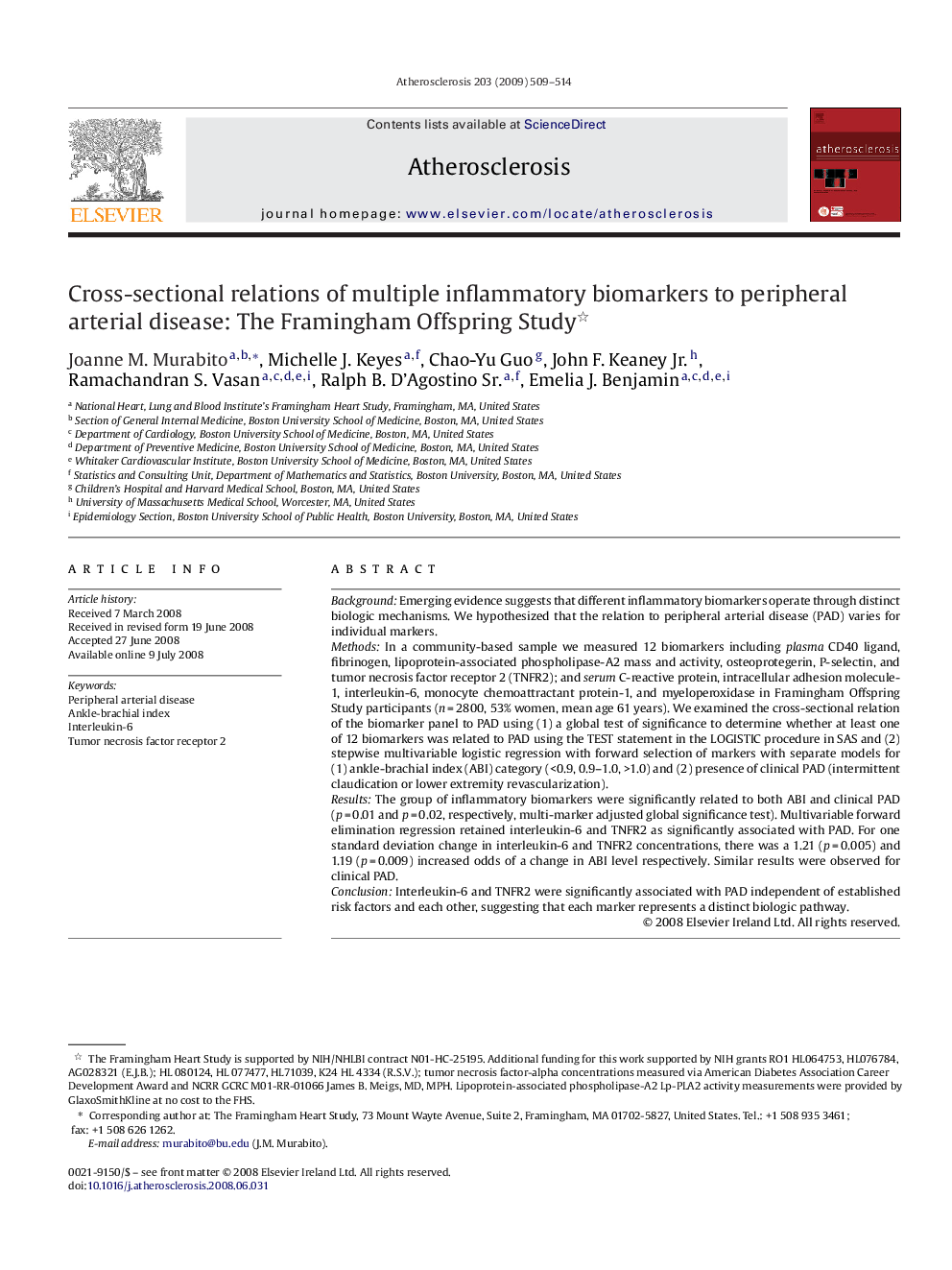| کد مقاله | کد نشریه | سال انتشار | مقاله انگلیسی | نسخه تمام متن |
|---|---|---|---|---|
| 2893730 | 1172419 | 2009 | 6 صفحه PDF | دانلود رایگان |

BackgroundEmerging evidence suggests that different inflammatory biomarkers operate through distinct biologic mechanisms. We hypothesized that the relation to peripheral arterial disease (PAD) varies for individual markers.MethodsIn a community-based sample we measured 12 biomarkers including plasma CD40 ligand, fibrinogen, lipoprotein-associated phospholipase-A2 mass and activity, osteoprotegerin, P-selectin, and tumor necrosis factor receptor 2 (TNFR2); and serum C-reactive protein, intracellular adhesion molecule-1, interleukin-6, monocyte chemoattractant protein-1, and myeloperoxidase in Framingham Offspring Study participants (n = 2800, 53% women, mean age 61 years). We examined the cross-sectional relation of the biomarker panel to PAD using (1) a global test of significance to determine whether at least one of 12 biomarkers was related to PAD using the TEST statement in the LOGISTIC procedure in SAS and (2) stepwise multivariable logistic regression with forward selection of markers with separate models for (1) ankle-brachial index (ABI) category (<0.9, 0.9–1.0, >1.0) and (2) presence of clinical PAD (intermittent claudication or lower extremity revascularization).ResultsThe group of inflammatory biomarkers were significantly related to both ABI and clinical PAD (p = 0.01 and p = 0.02, respectively, multi-marker adjusted global significance test). Multivariable forward elimination regression retained interleukin-6 and TNFR2 as significantly associated with PAD. For one standard deviation change in interleukin-6 and TNFR2 concentrations, there was a 1.21 (p = 0.005) and 1.19 (p = 0.009) increased odds of a change in ABI level respectively. Similar results were observed for clinical PAD.ConclusionInterleukin-6 and TNFR2 were significantly associated with PAD independent of established risk factors and each other, suggesting that each marker represents a distinct biologic pathway.
Journal: Atherosclerosis - Volume 203, Issue 2, April 2009, Pages 509–514